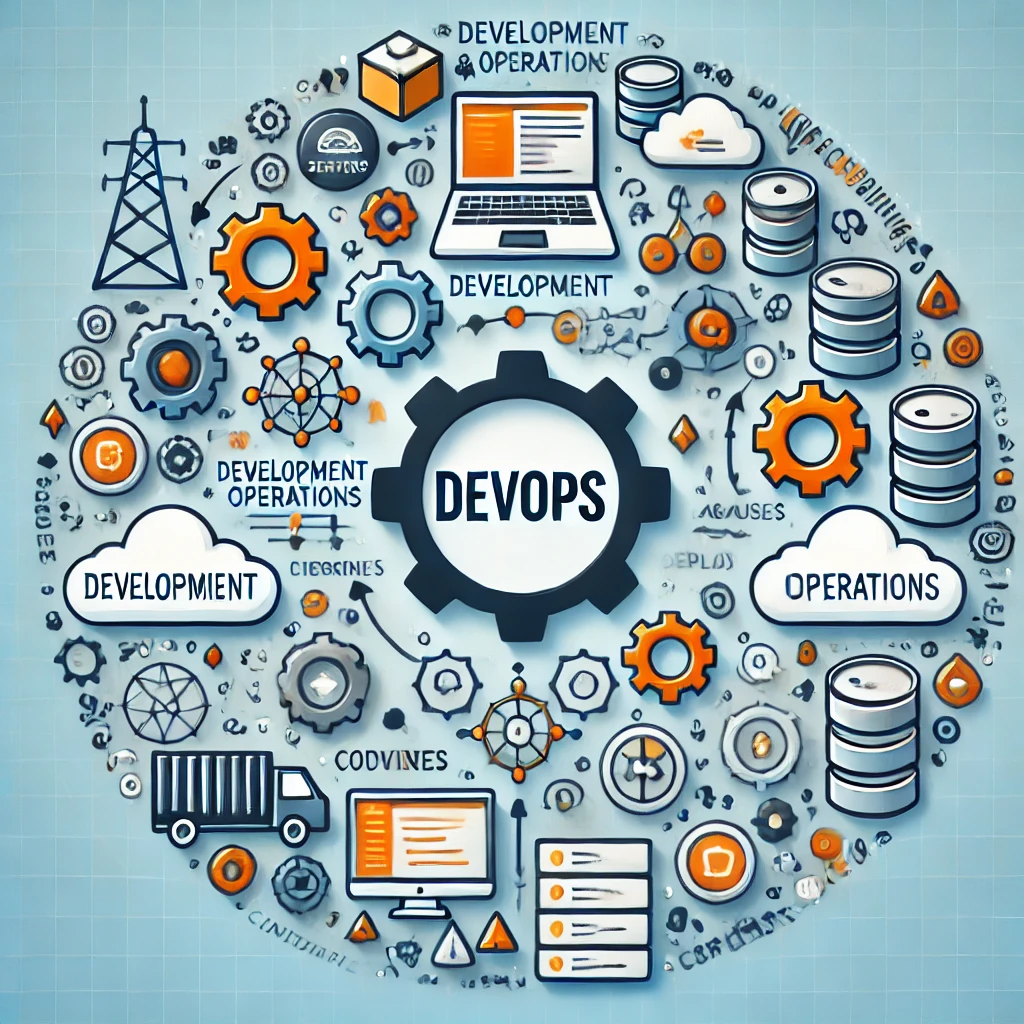Day-01: What is DevOps?
 Pakeeza Saeed
Pakeeza Saeed
1. What is DevOps? 🤔
DevOps is a way of working that helps different teams—like developers and IT support—collaborate more effectively to build, test, and release software faster. Instead of working separately, everyone involved in creating and running an application works together from start to finish, making the entire process smoother and quicker.
Think of it like a well-coordinated kitchen where chefs (developers) and waitstaff (operations) work side by side. With proper communication, the kitchen (your development process) produces meals (software) faster and with fewer mistakes. 🍽️
2. What is Automation? 🤖
Automation is about using tools and scripts to do repetitive tasks automatically, just like using a washing machine instead of washing clothes by hand. In the context of DevOps, automation helps:
🧑💻 Compile (prepare) the software code when a new feature is added.
📦 Automatically run tests to catch errors.
🚀 Deploy (release) the software to servers.
Real-Life Example:
Imagine a bakery 🍰 where cakes are baked, decorated, and packaged by machines instead of manually by people. This bakery can produce hundreds of cakes faster than one where each cake is baked, decorated, and packed by hand. This is similar to automation in DevOps, where using machines (tools) speeds up the software production process.
Why Automation Matters:
💨 Faster Delivery: Automating repetitive tasks saves time.
📉 Lower Mistakes: Machines follow instructions perfectly, reducing errors.
🕒 Saves Human Effort: Frees up people for more creative work.
3. What is Scaling? 📈
Scaling is the ability to grow or shrink the resources you use, depending on demand—like a restaurant adding more tables when it gets crowded or removing them during slow hours.
In DevOps, this means adding more computers or servers to handle more users during peak times (like Black Friday sales) and reducing them when fewer people are online to save costs.
Real-Life Example:
Think of a concert 🎤 that’s sold out. To accommodate more fans, the organizers can add extra seating, hire more security, and open more entry gates. Similarly, scaling in DevOps means adding more resources to handle more website traffic or processing power as needed.
4. What is Infrastructure in DevOps? 🏗️
Infrastructure is like the foundation of a house—it’s everything you need to keep your application running smoothly. This includes:
💾 Servers (computers where your software lives)
🌐 Networks (how everything is connected)
🗄️ Databases (where your data is stored)
In DevOps, managing this infrastructure is done through code instead of physical setups, making it easy to rebuild, modify, or move the foundation whenever needed.
Real-Life Example:
Imagine a smart home 🏡 where all devices—like lights, thermostat, and security—are connected and controlled through an app. DevOps does something similar by managing digital infrastructure through code, making changes as easy as pressing buttons on a remote.
5. Why is DevOps Important? 🎯
Adopting DevOps can revolutionize how a company develops software, making them more efficient, faster, and better at meeting customer needs. Here’s why it’s a game-changer:
🚀 Faster Deliveries: Companies like Amazon can release new features and updates every hour using DevOps, compared to traditional methods that took weeks or months.
⚡ Improved Team Collaboration: By breaking down silos, teams work together seamlessly.
🛠️ Better Product Quality: Continuous testing and monitoring lead to fewer bugs.
🔄 Adaptability: Easily scale up resources during peak times, such as shopping events, and scale down when not needed.
Real-Life Example:
Think of a Formula 1 pit stop team 🏎️. They work together seamlessly to refuel, change tires, and make adjustments in a matter of seconds. If even one person is slow, the entire process gets delayed. In the same way, DevOps brings teams together to deliver software updates quickly and accurately.
6. DevOps Best Practices to Follow 🔧
For a smooth DevOps process, consider these best practices:
📝 Document Everything: Keep track of every code change, update, and fix.
🔄 Automate Whenever Possible: Avoid manual tasks—machines are more consistent!
📊 Monitor Continuously: Use tools to track software health and catch problems early.
🔒 Secure Every Step: Don’t wait until the end to worry about security—make it part of every stage.
🤝 Foster a Collaborative Culture: Encourage teams to share knowledge and work together.
7. Tools & Technologies in DevOps 🔧
Here are some common tools used in DevOps, without getting too technical:
Version Control: Like keeping track of different drafts of a document (e.g., GitHub).
CI/CD Tools: Tools that automatically test and release new software versions (e.g., Jenkins).
Configuration Tools: Tools to set up servers easily (e.g., Ansible).
Containers: Think of these as virtual shipping containers 🧳 that package all the ingredients an application needs to run (e.g., Docker).
Monitoring: Tools to check on how the software is performing (e.g., Grafana).
8. Conclusion: Embracing DevOps 🌟
DevOps isn’t just for big tech companies. It’s a way of thinking that any team can use to work faster, smarter, and better. With automation, scaling, and modern infrastructure management, even small businesses can build and improve software just like the industry giants.
Subscribe to my newsletter
Read articles from Pakeeza Saeed directly inside your inbox. Subscribe to the newsletter, and don't miss out.
Written by
